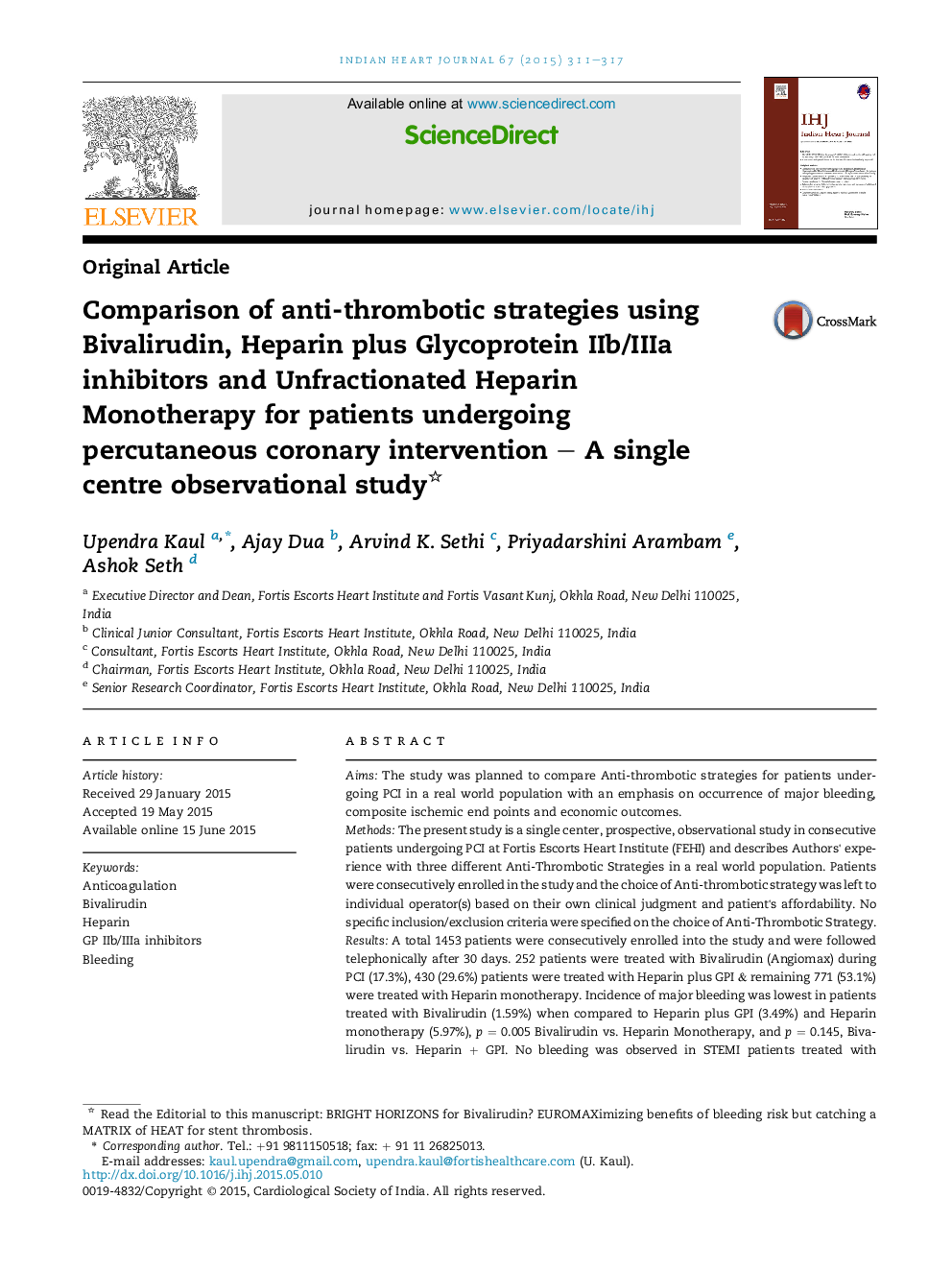| Article ID | Journal | Published Year | Pages | File Type |
|---|---|---|---|---|
| 2927427 | Indian Heart Journal | 2015 | 7 Pages |
AimsThe study was planned to compare Anti-thrombotic strategies for patients undergoing PCI in a real world population with an emphasis on occurrence of major bleeding, composite ischemic end points and economic outcomes.MethodsThe present study is a single center, prospective, observational study in consecutive patients undergoing PCI at Fortis Escorts Heart Institute (FEHI) and describes Authors' experience with three different Anti-Thrombotic Strategies in a real world population. Patients were consecutively enrolled in the study and the choice of Anti-thrombotic strategy was left to individual operator(s) based on their own clinical judgment and patient's affordability. No specific inclusion/exclusion criteria were specified on the choice of Anti-Thrombotic Strategy.ResultsA total 1453 patients were consecutively enrolled into the study and were followed telephonically after 30 days. 252 patients were treated with Bivalirudin (Angiomax) during PCI (17.3%), 430 (29.6%) patients were treated with Heparin plus GPI & remaining 771 (53.1%) were treated with Heparin monotherapy. Incidence of major bleeding was lowest in patients treated with Bivalirudin (1.59%) when compared to Heparin plus GPI (3.49%) and Heparin monotherapy (5.97%), p = 0.005 Bivalirudin vs. Heparin Monotherapy, and p = 0.145, Bivalirudin vs. Heparin + GPI. No bleeding was observed in STEMI patients treated with Bivalirudin compared to 7.4% in patients treated with GPI and 14.3% in patients treated with UFH. Similarly non-access site bleeding was lowest in patients treated with Bivalirudin. Only 4 patients (1.6%) treated with Bivalirudin required Blood transfusion compared to 25 in Heparin plus GPI (5.8%) and 38 (5%) in Heparin Monotherapy arm. In Composite Ischemic end-points, no “All-cause Mortality” was observed in Bivalirudin group compared to 2.8% in Heparin plus GPI. Early stent thrombosis was seen in 1 patient with Heparin plus GPI and none with Heparin monotherapy and Bivalirudin group. None of the patients underwent TLR (target lesion revascularization) and TVR (target vessel revascularization) within 30 days post procedure other than one early stent thrombosis reported with Heparin plus GPI. Cost of blood product transfusion was lower with Bivalirudin as compared to Heparin plus GP IIb/IIIa arm (p = 0.01) and with Heparin alone (p = 0.001). Due to lower complications including blood transfusions and reduced hospital stay in Bivalirudin group, these benefits outweigh the incremental cost due to higher acquisition cost of the drug.ConclusionBivalirudin use during PCI is associated with a distinct advantage of having lower access site and non-access site bleeding without compromising on the efficacy. We observed a reduction in blood transfusions, hospital stay and mortality for patients treated with Bivalirudin compared with Heparin plus GPI or Heparin Monotherapy. Bivalirudin can be safely adopted into our Institutional protocol for the treatment of high risk PCI such as STEMI, ACS, and Complex elective PCI.
